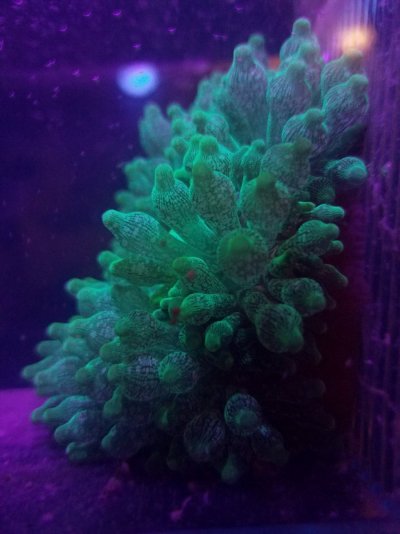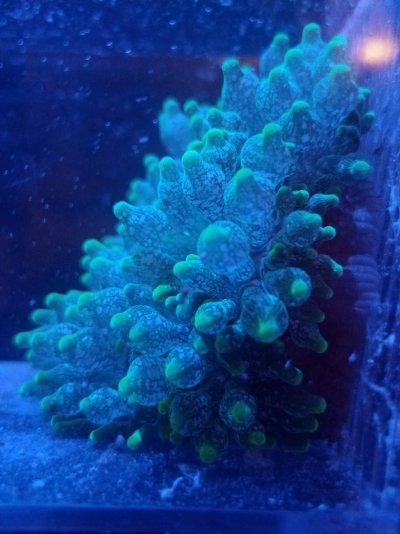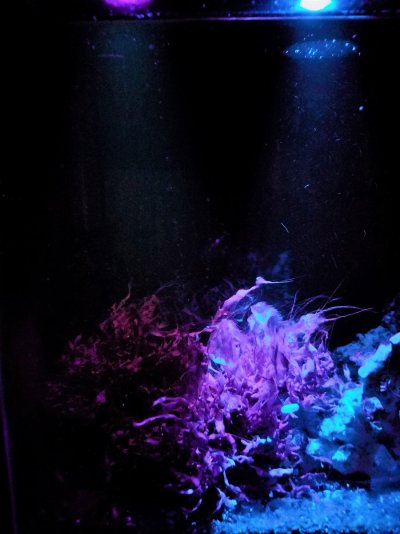Well, even if the UV LEDs don't offer much in terms of added benefit for coral growth, having as many different colors as possible in the actinic and UV range does bring out the colors in the corals better. I noticed shorter wavelength tend to bring out the green and red colors more and longer wavelengths bring out orange better.
Also, the green pigment in corals and anemones is like the pigment in our skin in that it blocks UV, so its possible some people whose BTAs turns from green to brown, it is not getting enough UV. Perhaps they just need to get a tan. Just a theory. I have also been wondering if UV helps BTAs fight off bacteria.
This is a nem under 395nm vs 470nm. As you can see, the 395nm brings out the green better.


This is gracilaria macro algae. The UV makes red macro algae deep red. The Blue sort of washes out the color.

Also, the green pigment in corals and anemones is like the pigment in our skin in that it blocks UV, so its possible some people whose BTAs turns from green to brown, it is not getting enough UV. Perhaps they just need to get a tan. Just a theory. I have also been wondering if UV helps BTAs fight off bacteria.
This is a nem under 395nm vs 470nm. As you can see, the 395nm brings out the green better.


This is gracilaria macro algae. The UV makes red macro algae deep red. The Blue sort of washes out the color.

Last edited:

















